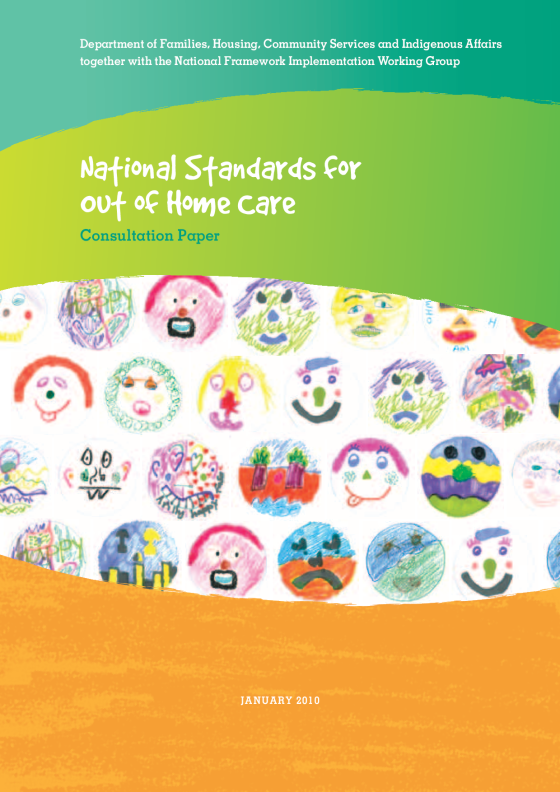About this resource
This Consultation Paper has been developed to inform the consultation stage of the process for developing National Standards in Out of Home Care (the National Standards). The National Standards are intended to apply to formal care arrangements. Formal Out of Home Care service options include, but are not limited to, residential care, foster care and kinship care (where the carer is supported by an agency).
Resource details
Date published: 1 Jan 2010
Having trouble accessing?
We take care to provide accessible resources. If you need help to access or a different format, you may like to:
Visit our accessibility page
Get in contact
DSS1057 | Permalink: www.dss.gov.au/node/1057
